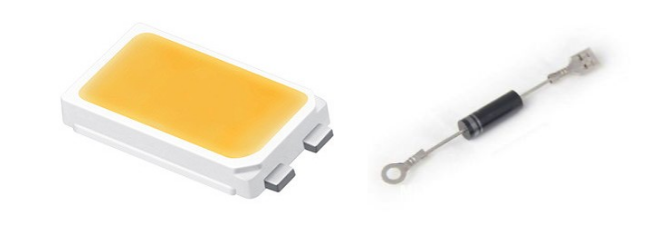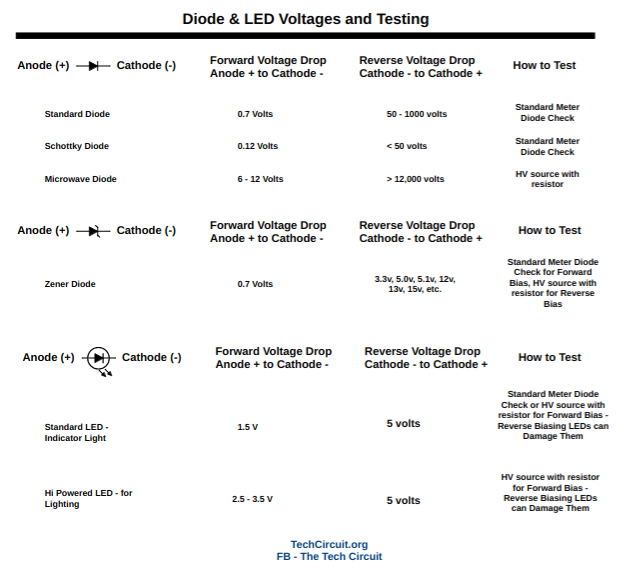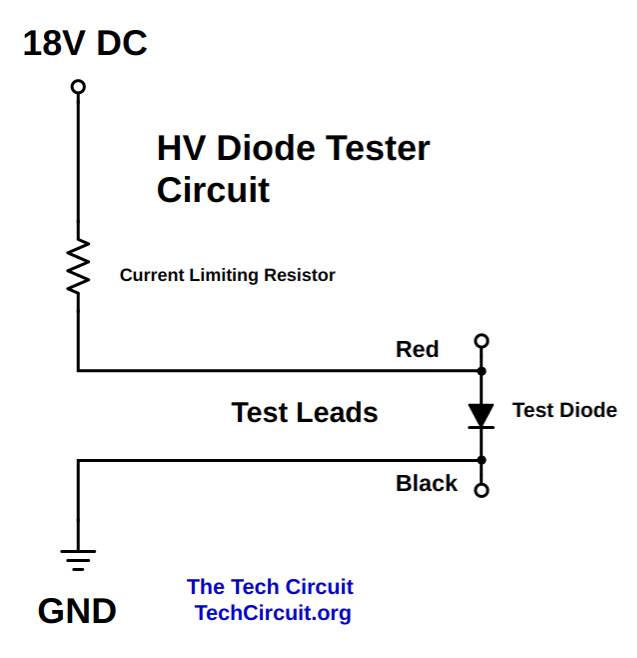
How to test Different Types of Diodes
Testing diodes is primarily a matter of checking the forward and reverse bias voltages. LEDs have a higher forward bias than most diodes. The high-powered ones used for lighting usually cannot be tested with the diode check function on your meter nor with a simple resistance check. The same goes for microwave diodes. They have a very large forward bias voltage. There are tricks to testing such diodes. For one, many LEDs will slightly glow when using the diode check feature of some voltmeters. For example. The Fluke 115 meter has a lead-to-lead test voltage of greater than 3 volts – even though the display range is only 2 volts. Thus you can’t get a forward bias voltage reading on most high-voltage diodes, with this meter. However, you can often get them to glow (albeit sometimes slightly) when you connect the leads. This test is not consistent with all LEDs, but at least lets you know if some LEDs are at least functional.
In general, you will need a higher voltage source and a current limiting resistor to consistently and effectively test most LEDs and other relatively high voltage diodes. Figure 1 below shows most diode types and their associated forward and reverse bias voltages, along with the best method to test them.

You will need a higher voltage than your voltmeter can supply if you want to test high-power LEDs (used for lighting) or microwave diodes. You also need a current liming resistor. The schematic diagram below shows the basic circuit for this. The resistor will need to be correctly sized for the application. Please note that testing LEDs backwards (reverse bias) can damage them. One would need to only test LEDs in with the anode and cathode properly connected when using a high voltage and limiting resistor. Figure 2 shows a simple circuit for testing high voltage diodes.

Understanding how diodes work is important for technicians. This will enable them to quickly and effectively test them confidence.
Below is a related video. It shows how to build a microwave diode tester that uses a relatively high voltage for testing most all microwave diodes. I designed this over 20 years ago and it has never failed me.
High Voltage Microwave Diode Tester
Disclaimer
This blog is intended for experienced or supervised technicians. Always take appropriate safety precautions when dealing with live circuits. For informational purposes only. Utilize the concepts in this blog at your own risk. The Tech Circuit or Steve Morrison assumes no responsibility or liability for any errors or emissions in the content of this blog. The information contained in this blog is provided on an as is basis with no guarantees of completeness, accuracy, usefulness, or timeliness. Never attempt to repair circuit boards in appliances or HVAC systems unless you are directly supervised by a professional engineer and doing so under approved ISO and UL processes.
Don’t forget:
“Diverting 10 min/day of social media time towards learning something new, is 5 hours of newfound monthly knowledge.” – SM
To DONATE to the Tech Circuit – CLICK HERE
Alphabetical Links to all Tech Circuit Articles and Blogs – CLICK HERE
Links to all Tech Circuit Cheat Sheets/Field References for Appliance/HVAC Techs – CLICK HERE
For additional electrical and electronics learning material for field techs, visit our homepage at http://www.TechCircuit.org or our Facebook group at https://www.facebook.com/groups/746823709133603.
We are a participant in the Amazon Services LLC Associates Program, an affiliate advertising program designed to provide a means for us to earn fees by linking to Amazon.com and affiliated sites.
